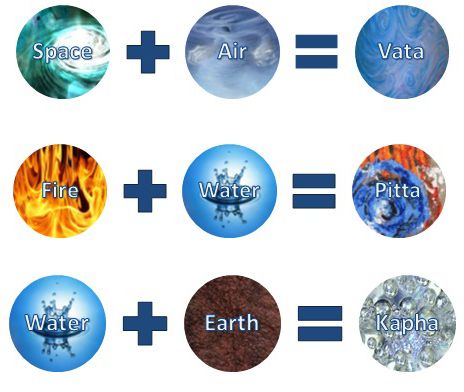
What is Disease?
Disease simply means when body is not at ease. As per modern terminology, a disease is a pathological state, which either effects one or all the parts of the body. A specific disease has its own signs and symptoms. On the other hand, some physicians call disease a phase that hinders normal function of the body.
In Ayurvedic practice, disease is known as “Vyadhi”. According to the Ayurvedic tradition, disease has two causes.
- Disease arising from physical causes. Here the main culprit is disturbance in equilibrium between three biological humours, prime energies of the physical body and the elements.
- Diseases arising from effects of wrong actions done in the life. This may include social reason, emotional trauma or stress. Diseases here have mental or psychological origin.
Classification of Disease in Ayurveda
- Samanyaj Vyadhi : Samanyaj vyadhi are outcome of an imbalance among one or all three biological humours. Samanyaj vyadhi is caused by disharmony among one, two or three humours.
- Nanatmaj : This disease is caused due to disequilibrium of one particular humour.
- Agantuj : When the patient suffers from a disease caused due to the entry of a foreign organism like virus or bacteria, into the system.
- Nijroga : Nijroga vyadhi is outcome of imbalance between all three biological humours.
- Manas : Manas vyadhi occurs when, when the biological humours interfere with the functioning of the nervous system.
- Sadhya : Diseases which can be cured are known as sadhya. Sadhya is further classified in two types:
- Sukhasadhya : Sukhasadhya refers to diseases, which can be cured with ease within a limited period of time.
- Kruchchhasadhya : The diseases which a physician finds difficult to cure fall in this category.
- Asadhya : A disease is referred to as asadhya, if it is incurable. Sadhya is further classified in two types :
- Yapya : In this case, patient gets relief within stipulated time but chances of relapse are high. The characteristic feature of this type is that disease can be cured in the course of medication.
- Anukarma : Here treatment given to the patient in unable to provide relief to the patient.
Underlying Cause of the Physical Diseases
Ayurveda is based on peculiar fundamental principles like Tridosha (three humors vata, pitta and kapha) theory, and Panch-mahabhuta (five elements ether, air, fire, water and earth) theory. Imbalance of the three humours is considered to be the root cause of the disease.
- Vata is a combination of air and ether
- Pitta is combination of earth and fire
- Kapha is a combination of ether and water.

Further, five subtypes of vata; pitta and kapha have been described in Ayurveda. These are tabulated below:
Table : Types and functions of Vata
| Sr. No. | Type | Functions |
|---|---|---|
| 1 | Prana | Breathing, blood circulation and swallowing |
| 2 | Udana | Sound, speech, memory |
| 3 | Vyana | Perspiration, blinking and other movements |
| 4 | Samana | Digestion and formation of stools |
| 5 | Apana | Excretion of the waste products |
Table : Types and functions of Pitta
| Sr. No. | Type | Functions |
|---|---|---|
| 1 | Ranjaka | Colour of blood, bile and stools |
| 2 | Sadhaka | Deals with intellect and memory |
| 3 | Alochaka | Visual perception |
| 4 | Bharajaka | Colour of the skin |
| 5 | Pachaka | Digestion of food stuffs |
Table : Types and functions of Kapha
| Sr. No. | Type | Functions |
|---|---|---|
| 1 | Tarpaka | Sense and hearing |
| 2 | Avalambaka | Protects heart and lungs |
| 3 | Kledaka | Digestion |
| 4 | Bodhaka | Gustatory perception |
| 5 | Sleshaka | Lubrication in the joints |
In medicine, cause of the diseases is known as aetiology. In Ayurveda, we call it as Nidana. Factors, whether external or internal, causing disease disturbs the equilibrium in functioning of the three biological humours, resulting in initiation of the disease process. Disease causing factors can disturb any of the three biological humours.
Underlying Cause of the Mental Diseases
Manas roga in modern age are known as psychiatric diseases and treatment with Ayurvedic principles is known as Ayurvedic psychotherapy or Ancient psychiatry. The study of mental health constitutes one of the eight divisions of Ayurveda. Underlying pathology of Manas roga is psychological or emotional imbalance. Physical diseases are outcome of psychological factors. It is a common observation that patients are careless about mental and physical health as they are preoccupied by psychological or emotional imbalance.
According to Manovigyana, site of mind is heart. Heart represents network of channels within the human body which are responsible for flow of fluids. Disturbance in physical or mental form, results in physical and mental diseases.
Manas roga or mental diseases are associated with emotion trauma, negative attitude, stress, sexual-abuse, personal losses or drug-induced. According to Ayurvedic philosophy, Manas roga are born out of disturbance in Sattva, one of the Trigunas. Sattva is largely responsible for inherent quality of the mind. Sattva, if overshadowed by Rajas or Tamas, losses its predominance and manifestations are evident from depression, anxiety-neurosis, stress, sham-rage, schizophrenia and above all, melancholia.
